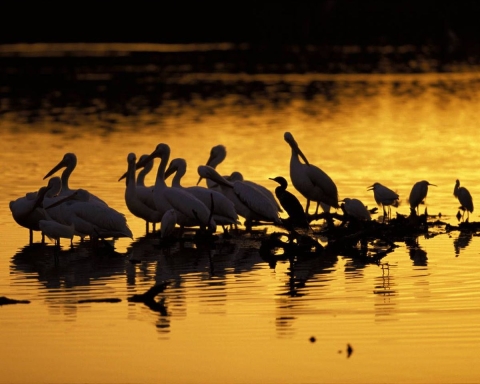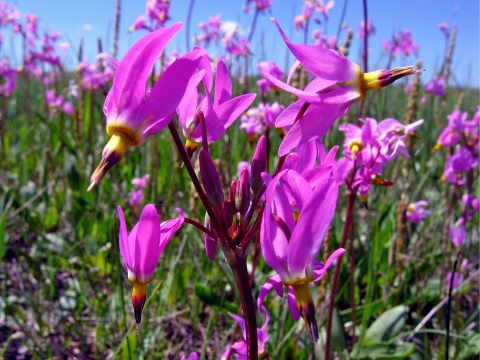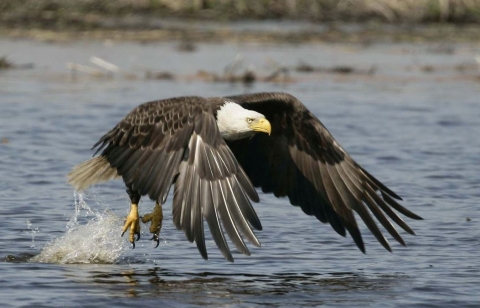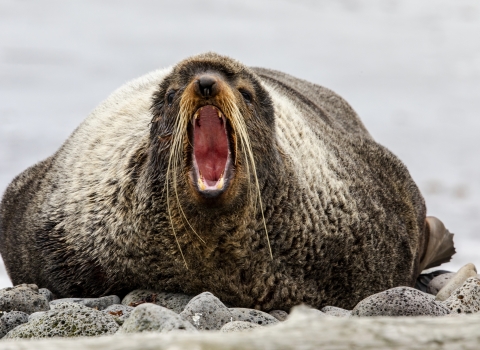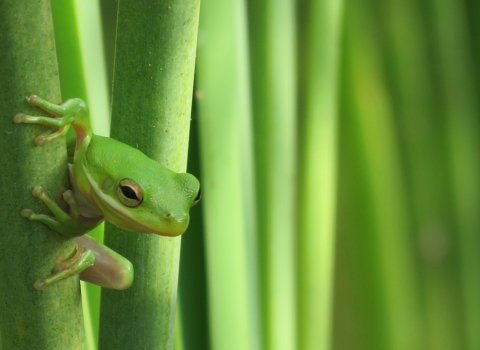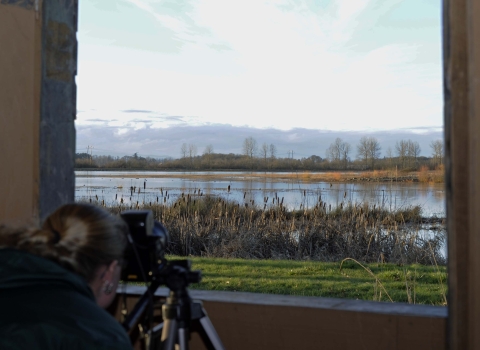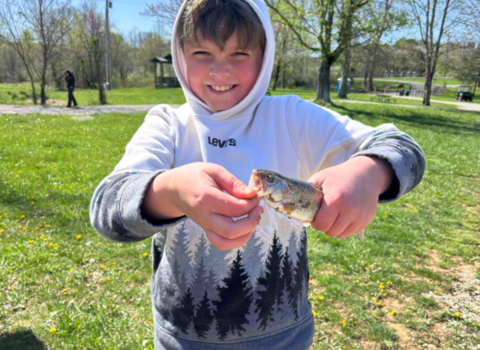To capture great nature and wildlife photos, take some tips from two experts: Pat Leeson and Matt Poole. Leeson’s photos have graced National Geographic magazine and several wildlife books. Poole, visitor services manager at Parker River National Wildlife Refuge in Massachusetts, has taught wildlife photography at the National Conservation Training Center in Shepherdstown, West Virginia.
- Aim for feeling. “Any image that captures a feeling you want to save as a memory is a good photo for you,” says Leeson. “If you can get a photo that elicits the same feeling in other people, then you have a classic.”
- Look them in the eyes. “Photos are most effective taken at an animal’s eye level,” says Poole, even if that means you have to crouch. “If nothing else in the frame is sharp, make sure the eyes are sharp.”
- Reduce background noise. Look out for “out-of-focus birds right behind the one you’re shooting,” says Leeson, “or a telephone pole growing out of the head of whatever it is you’re photographing … Find an angle where you can eliminate things that distract your eye.”
Start early. Stay late. “When the sun is low” — soon after sunrise and just before sunset — “the color of light tends to be a lot warmer,” says Poole. “It’s often called the golden light or the magic light.” Midday is not a great time for photos because the overhead sun creates harsh shadows.
Wading birds at sunset at J.N. "Ding" Darling National Wildlife Refuge in Florida. | Image Details - Aim to be first. Being first on the scene “increases the feeling of intimacy with the place and the moment,” says Leeson. There’s a practical benefit, too “If you’re shooting insects like butterflies,” says Poole, “you’ll be a whole lot more effective if you start early when it’s still relatively cool and when insects, because they’re cold-blooded, are still relatively sluggish.”
Know your camera’s limits. Leave the full-frame bird images to the folks with killer optics and giant telephoto lenses. Simpler cameras work well for landscapes and “overall scenes that incorporate the animal in some way,” suggests Leeson. Or try close-ups of more approachable things like butterflies and flowers, says Poole.
Shooting stars erupt in showy purple blossoms at J. Clark Salyer National Wildlife Refuge in North Dakota. | Image Details - Steady the camera. “Having a stable camera is everything,” says Poole, “which is why we always suggest that people use tripods.” Resting the camera lens on your car’s door frame and shooting from inside your stopped car also works well. Plus, cars scare animals less than humans do.
- Be patient with yourself. Even the pros miss some shots. Pat and Tom Leeson learned to build in extra time on eagle shoots. “The first time an eagle comes and flies right over your head and hits the fish … your breath is taken away,” says Pat Leeson. “Neither one of us could focus even. But after you’ve seen it 100 times, you’re finally able to focus and be in sync.” Adds Poole, “The more you do it, the better you get, just like anything else.”
- Respect your subjects. Baiting wildlife on a national wildlife refuge national wildlife refuge
A national wildlife refuge is typically a contiguous area of land and water managed by the U.S. Fish and Wildlife Service for the conservation and, where appropriate, restoration of fish, wildlife and plant resources and their habitats for the benefit of present and future generations of Americans.
Learn more about national wildlife refuge is illegal, as is altering wildlife habitat. Keep a safe and respectful distance from animals. - Relish your time in nature. The perfect image may escape you. Enjoy the experience of being out in nature just the same.



